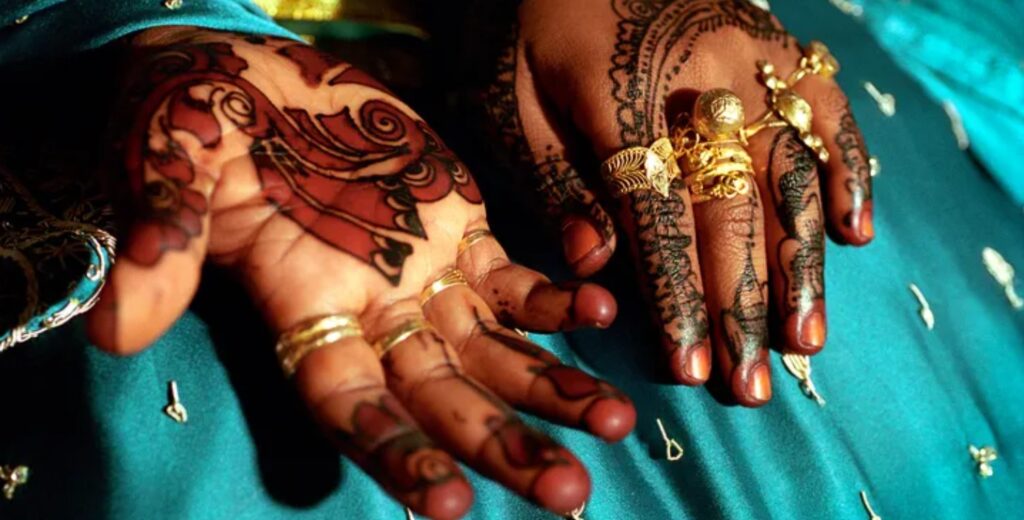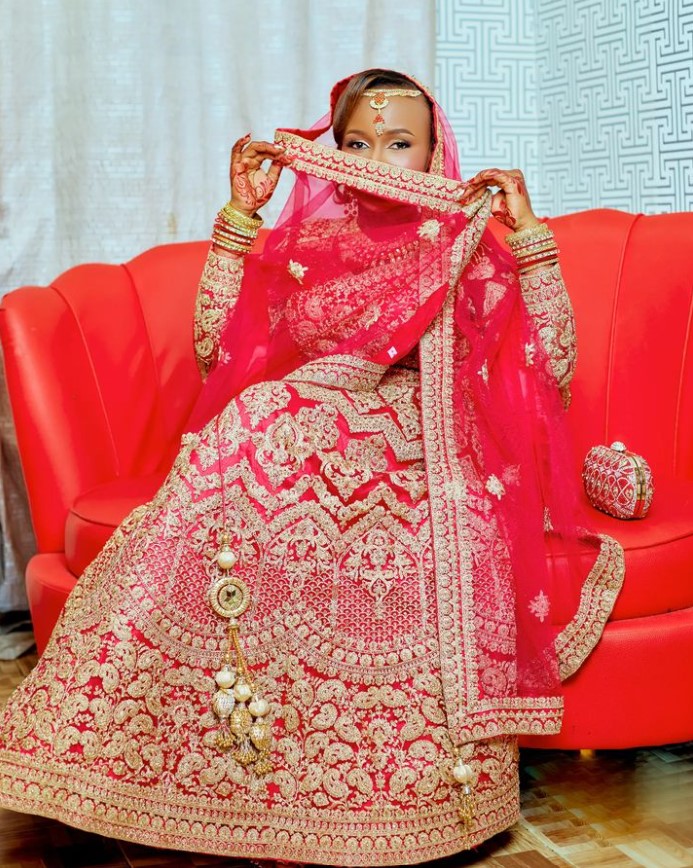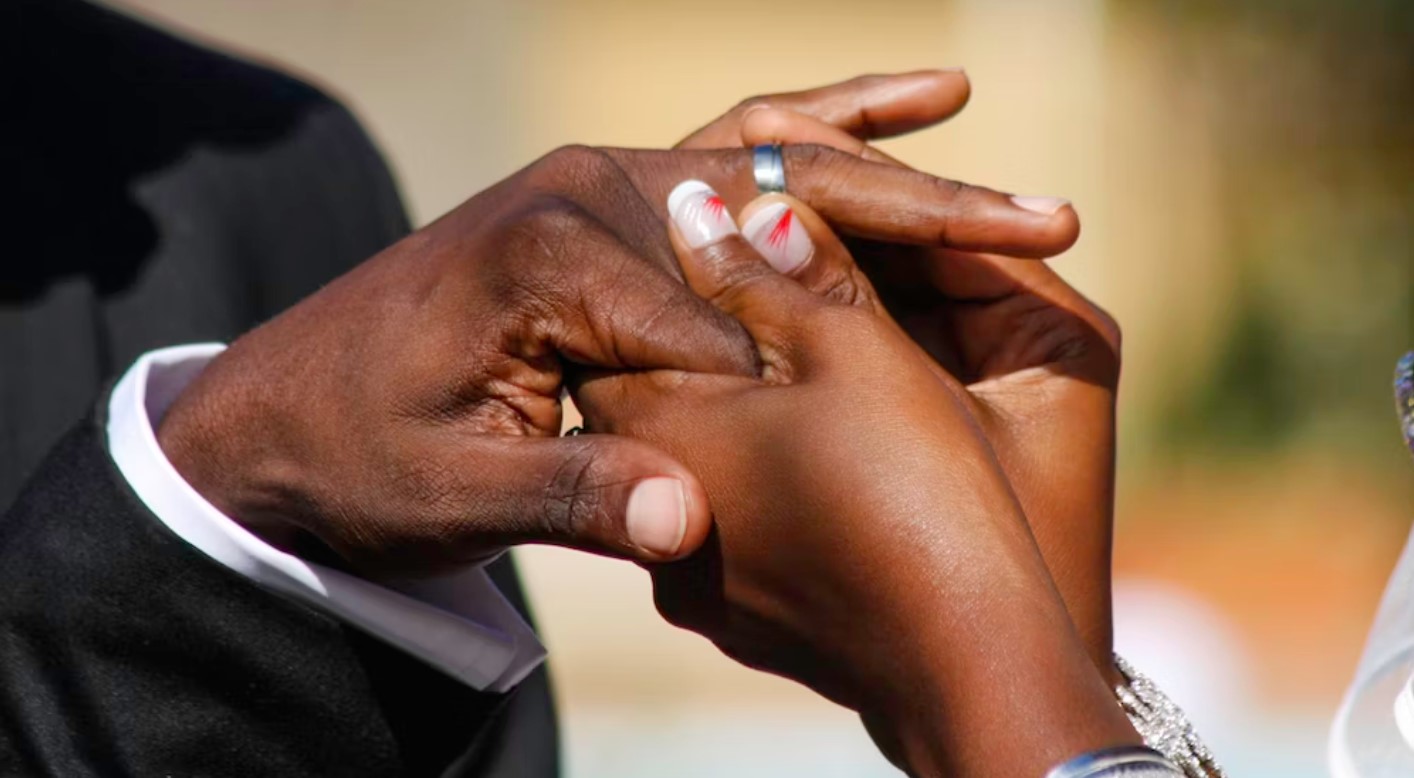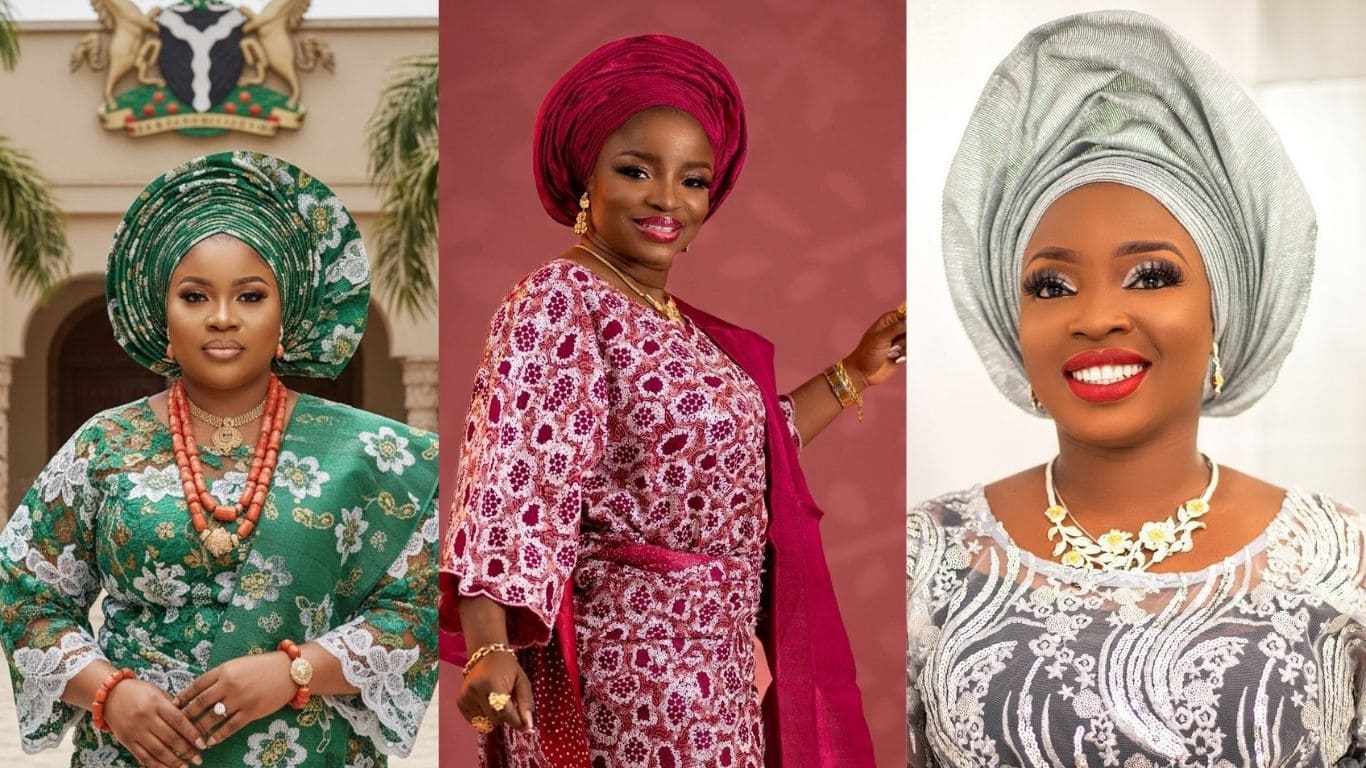Tanzanian weddings are rich in diverse cultural traditions and customs. But who foot the bills? Here’s what the bride, groom, and their parents pay.
Planning a wedding in Tanzania involves various considerations, and one of the most significant questions couples face is who foots the bill.
In Tanzanian culture, wedding costs are often a shared responsibility among the families of the bride and groom. However, modern trends and evolving societal norms have led to shifts in financial responsibilities.
Understanding who pays for what in a Tanzanian wedding can alleviate stress and ensure a harmonious planning process for the couple and their families. Keep reading as JanaTribe delves deep into the cost and how it is catered for, an inspiration for incoming couples!
What are marriages in Tanzania like?
Marriage customs in Africa vary from one tribe to another. Before colonization, marriages were strictly traditional and depended on the customs, traditions, and beliefs of the people. However, that changed with colonization and the intrusion of Western religion, the Christian marriage (the white wedding), or the Islamic wedding, which is gradually replacing traditional marriage in some African tribes.
Marriage in Tanzania, in the traditional African sense, means building stronger family ties. It goes beyond the union of two people. It is also enriched with traditions and customs. It often incorporates religious customs according to the couple’s faith, grounding the celebration in spiritual significance. In Christian ceremonies, couples typically exchange vows in a church with blessings and sermons led by the clergy, whereas in Islamic marriages, the couple is blessed by elders or leaders.
In Tanzania, weddings are joyous occasions that bring families, friends, and communities together. They are often elaborate affairs that involve extensive planning and preparation.
From the moment a couple decides to tie the knot, the entire process is steeped in tradition and cultural significance. Tanzanian weddings are marked by colorful ceremonies, lively music, and delicious food, making them unforgettable experiences for all involved.
Sections 10(2), 13(1), and 15 of Tanzania’s Law of Marriage Act of 1971 (as amended by Act 23/73, Act 15/80, and Act 9/96) allow men to contract polygamous marriages and permit the marriage of 15-year-old girls, while the minimum age of marriage for boys is 18. A portion of the two sections of the 1971 Marriage Act even allow girls to marry 14 with the permission of a court.
New marriage law in Tanzania was passed years ago, and the policy focus was generally on child marriage rather than forced marriage because Tanzania has one of the highest rates of under-18 marriage in the world. However, Tanzanians over the age of 18 are also coerced by their parents into marriage.
A publication on HuffPost puts anyone who encourages child marriage to a penalty of 30 years in prison. “This ruling is a headway toward solving the problem, but it cannot by itself be the solution to child marriages,, said Hellen-Kijo Bisimba, a women’s rights campaigner and lawyer with the Legal and Human Rights Centre.
The practice of clan exogamy, or marriage outside of the clan or group, is typical of almost all ethnic groups. In some tribes, arranged marriages are a common practice, Tanzanian Weddings reports. However, this is becoming less common as Western influence grows stronger on the continent.
A common element in marriages in Tanzania is the introduction, or “knock door, (as some other tribes may call it). This early stage of marriage custom involves a small ceremony when the groom and his family visit the bride’s family to officially declare their intentions.
Another common traditional marriage custom in Tanzania is the payment of the bride’s price, or dowry. Over the years, there has been a growing debate on its relevance and legitimacy. This is one dominant tradition that cuts across diverse tribes.
The size of a dowry or bride price (which may come in the form of money or gift items) differs from one tribe to another. Also, some ethnic groups believe payment of the bride’s price is important to show the man’s commitment and as a sign of respect to the bride’s family. Others believe it is a tradition that has lost its relevance for impoverished would-be couples. Others blame it for the inability of low-income earners to get married.
The majority of the wedding ceremonies (especially those of Muslims) in Tanzania are performed in the Shawaal, which is the 10th month of the lunar Islamic calendar. Christian marriages take place on weekends, mostly on Saturdays or Sundays. After the wedding ceremony is concluded, a reception usually follows, which serves as a celebration for the newlyweds. The party involves various games as well as feasting and dancing by the couple and other guests.

How much does a wedding cost in Tanzania?
Marriage in Tanzania is an extravagant affair due to the rich African customs and traditions. Many ceremonies always have a long list of guests, and putting together a budget would not be so easy.
The amount of money the couple and their families are willing to put into the ceremony determines how grand and expensive a wedding will be.
According to Tanzanian tradition, traditional celebrations can go on for as long as 3 days, and it is required that people contribute to the ceremony. This reduces the burden on the very expensive wedding budget.
Contributions range from Tshs 30,000 to upward of Tshs 1,000,000 (less than $15 to $400). Most people usually contribute Tshs 50,000 (less than 30 USD) as a standard ‘generous’ amount. An average Tanzanian wedding budget is often around 12,938,230.00 Tanzanian Shilling ($5,000) and above; this covers the feeding, entertainment, music, venue, decorations, transportation, and photography at the ceremony, per Marry on Chain.
As a rule of thumb, you can inquire about the venue and expected attendance. A posh venue with high attendance indirectly means the wedding budget is high, therefore, you are expected to contribute more. Also, there are expectations from the wedding planners – if you are a middle to high-income earner, small contributions will raise eyebrows and earn you a reputation for being stingy.
The bride’s price is often a very hefty sum, and the husband is required to pay it to the bride’s family or, according to Muslim traditions, to the bride herself.

Who pays for the wedding in Tanzania?
Many people spend a fortune on their entire wedding, from the planning stage to the honeymoon. These costs range from traditional rites to white weddings.
In the early 1990s, costs were “unfairly, divided; however, modern couples finance their weddings in their ways.
Who will pay for your wedding? In many Tanzanian families, the parents of the bride and groom foot the bill for most of the wedding expenses. However, some couples and cultures choose to split the cost in different ways. Sometimes the bride’s family is responsible for one day, while the groom’s family pays for another.
You’ll also need to decide if the groom and his family will pay the bride’s price. (While this is still widely practiced in Tanzanian wedding culture, more couples are choosing to opt out of the tradition.
Ultimately, it’s up to the couple to decide who will pay for what at their wedding. While having more contributors may increase your budget, it can also lead to compromise. So consider this carefully and check everyone has the funds to support you on your wedding day. However, the typical costs or things that are paid for include the following:

Traditional Weddings in Tanzania
The first cost in a traditional Tanzanian wedding is the bride’s price or dowry. This demonstrates that the man getting married is capable of taking care of a family and also serves as a token of gratitude to the bride’s family for raising a wonderful woman.
Bride Price
One of the most important aspects of a traditional Tanzanian wedding is the bride price, or dowry, also known as “lobola, or “mahari., It remains one of the most common elements in almost all traditional weddings in Africa.
This is a customary payment made by the groom or his family to the bride and her family as a symbol of respect and appreciation.
The bride’s price varies depending on factors such as the social status of the family and the preferences of the bride and groom. The bride’s price mostly includes clothing, livestock, some beer brewed in the village, money, etc.
In Kurya’s polygamous, patriarchal culture, men use cows as currency to buy multiple wives. The tragic story of two women, Mugosi Maningo and Anastasia Juma, from the remote village of Nyamongo in far northern Tanzania, who married each other because of their bad experiences with men who abused them, is also another case of cows as bride price. The couple did not have a wedding ceremony, but Mugosi paid Juma’s original “bride price” of eight cows to the family of her first husband. The payment released Juma from her ties to him and cemented her marriage to Mugosi. Almost all Kurya marriages, whether to a man or a woman, involve the payment of the bride’s price, or dowry, to the younger woman’s family.
There’s always a negotiation between the families, which is then followed by an agreement on what should be included in the dowry list.
Here, the groom and his family receive the list of items from the bride’s family that must be provided for the marriage ceremony to take place. The planning of the wedding will take months, and there will be many stages, such as a dowry presentation ceremony, a traditional ceremony, and a church wedding, or Nikkai.
How much is the bride price in Tanzania? According to Land Portal, dowries average between 10 and 20 cows (one cow is worth around 500,000 Tanzanian shillings, or about $230), and teen girls are typically married off to the highest male bidder.
In a research study by the American Economic Association, Tanzanian law governing marriages allows for bride price payments. Data from Tanzania marriages were obtained and bride prices were paid in 81.5% of marriages, with an average amount of 97,298 Tanzanian Shilling (about 45 USD) and a maximum amount is 1,005,000 (about 468 USD).
A white wedding in Tanzania
What does the bride’s family pay for? The bride’s family traditionally pays for the majority of the wedding-related expenses, from the engagement party to the newlyweds’ getaway car.
According to Christin Gomes and Ida Gibson, PhD, of Common Courtesy, these costs have typically included:
- Engagement party
- Wedding planner
- Invitations and day-of-stationery for church and reception
- Photography and Videography
- Venue
- Bride’s and bridesmaids attire (and all accessories, including veil)
- Ceremony and reception floral arrangements, décor, and rentals
- Food and drink
- Wedding cake
- Guest transportation
- Travel and lodging costs for bridesmaids and officiants
- Most other reception expenses
Per TheKnot, the biggest expense that the parents of the bride (traditionally) pay for is the wedding ceremony. The venue, décor, and music are all integral parts of the ceremony
A few costs can also be taken care of by the couple’s friends. If they are super lucky, the maid of honor and bridesmaids host the bridal shower and bachelorette party, the best man and groomsmen host the bachelor party, and friends may throw additional engagement parties or showers.
What does the groom’s family traditionally pay for? The groom’s family has traditionally picked up the tab for fewer wedding items, which have included:
- Marriage license and officiant fee
- Corsages and boutonniéres for family members on both sides
- Lodging for groomsmen
- Rehearsal dinner costs
- Reception alcohol (optional)
- DJ or band (optional)
Rehearsal dinners used to range in size from a small, wedding-party-only occasion to a larger soirée that included half or more of the wedding guests. Now, though, as many couples opt for welcome parties that are open to all of their guests, the groom’s parents aren’t expected to take on the entire cost, Martha Stewart reports.
What does the bride traditionally pay for? In the past, the bride would personally pay for:
- Wedding flowers and gifts for the bridesmaids
- All hair and makeup costs
- Groom’s wedding band
- Groom’s wedding gift
While these expenses are still typically covered by most brides, many modern women also contribute to the overall costs of the ceremony and reception.
What does the groom traditionally pay for? Traditional expectations for the groom’s financial contribution include:
- Engagement and wedding rings
- Marriage license and officiant fee (if not covered by parents)
- Legal expenses (e.g.: antenuptial contract)
- Ceremony expenses (organist, soloist, tips, and any form of entertainment)
- Bride’s and bridesmaids bouquet
- Groomsmen’s boutonniéres and gifts
- Bride’s wedding gift
- Wedding night accommodation and the honeymoon
Ring selection, for instance, is done by the couple, and traditionally, the groom pays for both the bride’s rings while she pays for his. But these days, the couple pays for them all, no two ways about that.
Post-wedding trips and honeymoon
Today, couples often share the costs of their post-wedding trip, incorporating honeymoon and wedding spending into their big-picture financial plans.
Friends and families of the couple’s contribution to the wedding cost are part of the culture.
Per a writeup on Quora, I’ve come to realised that in Tanzanian culture, it’s common for friends and family to contribute financially to the wedding, and the amount can vary widely. It’s best to consider what you can comfortably afford and what you feel is appropriate based on your relationship with the couple. If you’re unsure, you could consider reaching out to the couple or their close family members for guidance.
Usually, the contribution is to cover the cost of the wedding itself and not another long-term project, like taking the contribution and buying a plot of land, etc. That only happens when there is a windfall but not a primary aim.
Friends are wedding guests and they typically buy wedding gifts as per the gift list the couple gives their guests, or the couple may request that their guests contribute money to their honeymoon.
That being the case, the amount anyone contributes is a function of the following:
- Whether you will also be taking contributions for your wedding. If yes, then you will contribute as much as you can. Normal tradition is to reciprocate with a greater amount. So everyone tries to make as much outward contribution before their wedding as it maximizes inward contribution to your wedding.
- Will you be attending all the weddings and various committee meetings? If yes, then add to the base contribution a top-up for the meals you will be having. There is no such thing as a free lunch.
- How much you want to keep your status is the social circle. All contributions made are registered on paper and the committee reviews it at all the meetings. The last thing is your name is as the lowest contributor and then your claim as a close friend will be questioned
You can ask for the wedding budget and contribute accordingly.
What are the duties of the wife and husband in a typical Tanzanian home?
African society places a lot of responsibilities and duties on couples. In Tanzania, the woman is often assigned the greater workload, and this mindset has been present since childhood.
Many husbands think their only responsibility is to provide for the material needs of the family, while the woman does all the extra work and still does her formal job every day.
Tanzanian society is largely patriarchal, and as a result, women are viewed as primary caregivers, with husbands content to sit around with friends while the wife slaves away doing household chores.
Many modern couples are beginning to change that narrative; many husbands are becoming more considerate and often helping with household chores as well as taking care of the children.
Couples have to provide a conducive environment for the social and educational development of their children. They are also jointly responsible for providing all material needs, such as clothing, food, and shelter, for the family.
The couple is often required to put the needs of their family members before their interests.
Conclusion
Navigating the financial aspects of a Tanzanian wedding requires open communication and mutual understanding among all parties involved. While traditional customs may dictate certain financial responsibilities, modern couples have the flexibility to tailor their wedding budget to suit their preferences and circumstances. Ultimately, regardless of who pays for what, the most important aspect of any wedding is the celebration of love and commitment between the bride and groom, surrounded by the support and blessings of their families and loved ones.







